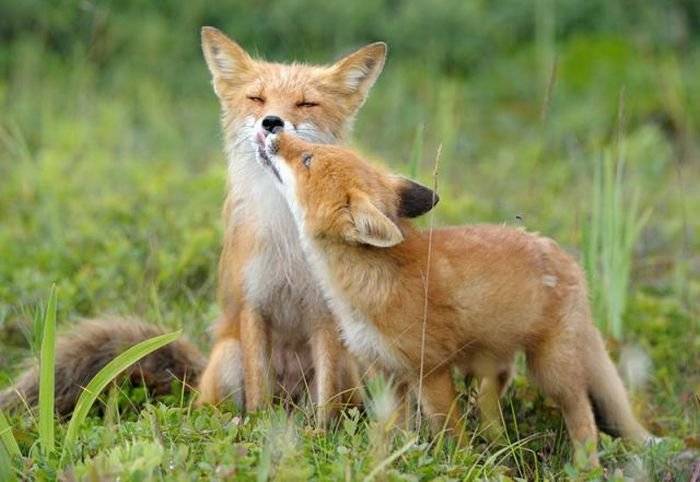The red fox is the largest of the true foxes and the most geographically spread member of the Carnivora, being distributed across the entire Northern Hemisphere from the Arctic Circle to North Africa, Central America and Asia. Its range has increased alongside human expansion, having been introduced to Australia, where it is considered harmful to native mammal and bird populations. Because of these factors, it is listed as Least Concern for extinction by the IUCN. It is included among the IUCN's list of the "world's 100 worst invasive species"
The red fox originated from smaller-sized ancestors from Eurasia during the Middle Villafranchian period, and colonised North America shortly after the Wisconsian glaciation. Among the true foxes, the red fox represents a more progressive form in the direction of carnivory.
Apart from its large size, the red fox is distinguished from other fox
species by its ability to adapt quickly to new environments and, unlike
most of its related species, is not listed as endangered anywhere. Despite its name, the species often produces individuals with abnormal colourings, including albinos and melanists. Forty-five subspecies are currently recognised,
which are divided into two categories: the large northern foxes, and
the small, primitive southern foxes of Asia and the Middle East
Red foxes are social animals, whose groups are led by a mated pair
which monopolises breeding. Subordinates within a group are typically
the young of the mated pair, which remain with their parents to assist
in caring for new kits. The species primarily feeds on small rodents, though it may also target leporids, game birds, reptiles, invertebrates and young ungulates. Fruit and vegetable matter is also eaten on occasion.
Although the red fox tends to displace or even kill smaller predators,
it is nonetheless vulnerable to attack from larger predators, such as wolves, coyotes, golden jackals and medium- and large-sized felines
The species has a long history of association with humans, having been
extensively hunted as a pest and furbearer for centuries, as well as
being prominently represented in human folklore and mythology. Because
of its widespread distribution and large population, the red fox is one
of the most important furbearing animals harvested for the fur trade
The red fox is considered a more specialised, progressive form of Vulpes than the Afghan, corsac and Bengal foxes in the direction of size and adaptation to carnivory; the skull displays much fewer neotenous traits than in other species, and its facial area is more developed. It is, however, not as maximally adapted for a carnivorous diet as the Tibetan fox
The species is Eurasian in origin, and may have evolved from either Vulpes alopecoides or the related Chinese V. chikushanensis, both of which lived during the Middle Villafranchian. The earliest fossil specimens of V. vulpes were uncovered in Barany, Hungary dating from between 3.4 and 1.8 million years ago.
The ancestral species was likely smaller than the current one, as the
earliest red fox fossils are smaller than modern populations. The earliest fossil remains of the modern species date back to the mid-Pleistocene
in association with the refuse of early human settlements. This has led
to the theory that the red fox was exploited by primitive humans as
both a source of food and pelts
Red foxes colonized the North American continent in two waves: during or before the Illinoian glaciation, and during the Wisconsinan glaciation. In the far north, red fox fossils have been found in Sangamonian deposits in the Fairbanks District and Medicine Hat. Fossils dating from the Wisconsian are present in 25 sites in Arkansas, California, Colorado, Idaho, Missouri, New Mexico, Tennessee, Texas, Virginia and Wyoming.
Although they ranged far south during the Wisconsian, the onset of warm
conditions shrank their range toward the north, and have only recently
reclaimed their former American ranges because of human-induced
environmental changes. Genetic testing indicates two distinct red fox refugia
exist in North America, which have been separated since the Wisconsian.
The northern (or boreal) refugium occurs in Alaska and western Canada,
and consists of the large subspecies V. v. alascensis, V. v. abietorum, V. v. regalis and V. v. rubricosa.
The southern (or montane) refugium occurs in the Rocky Mountains'
subalpine parklands and alpine meadows, the Cascade Range and Sierra
Nevada. It encompasses the subspecies V. v. macroura, V. v. cascadensis and V. v. necator.
The latter clade has been separated from all other red fox populations
since the last glacial maximum, and may possess unique ecological or
physiological adaptations
Origin Wikipedia ..




















No comments:
Post a Comment